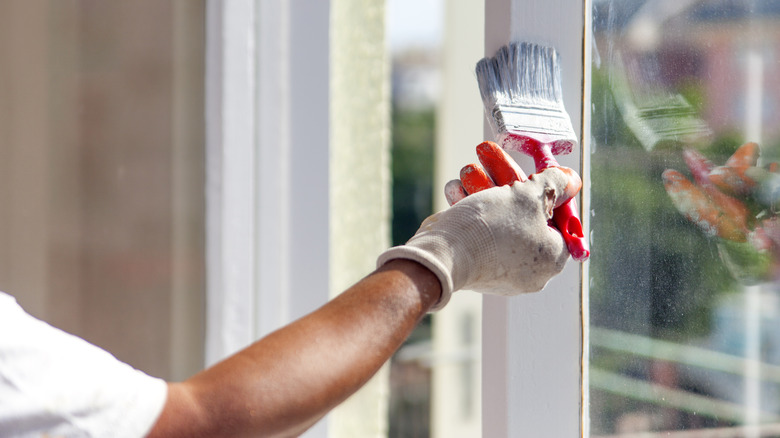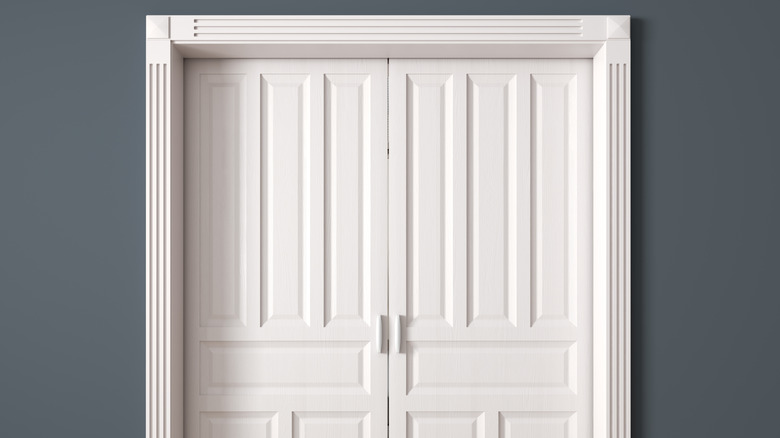The Trim Rule You Should Always Follow When Painting Your Walls
When embarking upon a new interior paint project, it is only natural to devote the lion's share of your attention to the walls alone. They are, after all, the biggest blank canvases in your home; a clean slate where even the most miniscule difference between hues can actually make a huge impact. But other miniscule details and surface areas carry great importance as well. Things like trim painting techniques can make a big difference in your room. Ignore the trim, and all that care you put into painting the walls will just come off as a little less polished.
Fortunately, you need only one little tip when considering your trim: don't paint it the exact same finish as your walls. Instead, it's typically best to semi-gloss it. Painting your trim with a semi-gloss sheen will help it stand out from your walls, which is especially important in monochromatic rooms. Semi-gloss is also more durable. Doorways, for example, are obviously highly-trafficked, whether it's an entryway or a bathroom threshold. You'll be surprised how many times the members of your household brush, touch, or outright grab door trim once you start seeing the fingerprints to prove it. A semi-gloss finish will best keep those dastardly smudges at bay, and they'll be easy to wipe away whenever they do appear. It also works for more than trim. In general, gloss paint is most suitable for similarly situated accent areas of your home, like baseboards and moldings.
The perils of semi-gloss alternatives for wall trim
Semi-gloss is best for those high-touch areas largely because it is so easy to clean. On the flat end of the sheen spectrum, matte paint is a headache in this regard. You can think of paint's sheen scale not only as an aesthetic guide but also as a de facto measure of its resistance to stains. Imagine running your hands along a matte white wall right now. It would have a dry, almost chalky feel to it, one that's thirsty for fingerprints and other vexing stains. Eggshell is only a little different from matte, so you'll want to skip that, too. These paint sheens are better used on walls. On the other hand, semi-gloss has that nice, slicker feel that makes grime less able to cling to it and easier to remove, while also providing a slightly different appearance.
High gloss, on the opposite end of the spectrum, is obviously easy to clean, but it shines a spotlight on imperfections that you might not have otherwise ever noticed. Its extra reflective qualities amplify texture inconsistencies, hairline cracks, and any other blemishes on your trim. High gloss paint can also have the unintended effect of creating a kind über-modern, space age aesthetic, when most folks are aiming for a timeless, classic look. Only semi-gloss, as its name implies, splits the difference for optimal trim results.

